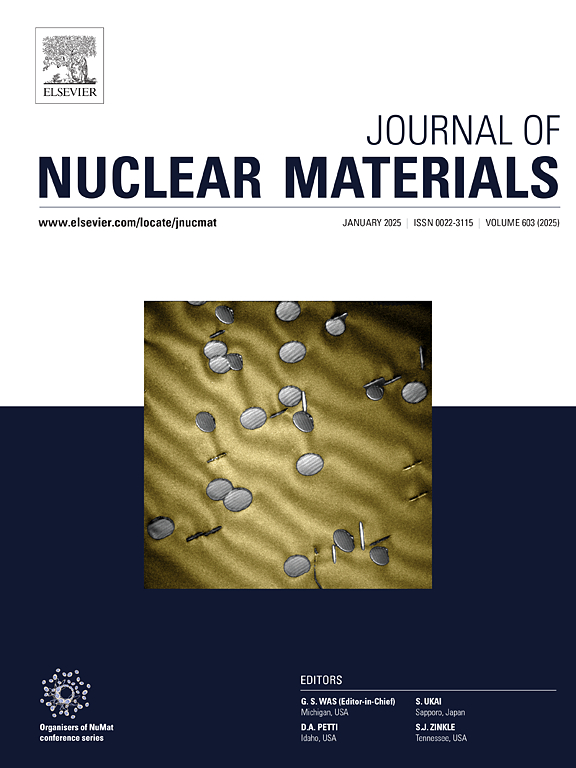Neutron flux impact on rate of expansion of quartz
IF 2.8
2区 工程技术
Q3 MATERIALS SCIENCE, MULTIDISCIPLINARY
引用次数: 0
Abstract
The radiation-induced expansion of concrete aggregate is a significant concern in the aging management of concrete biological shielding in nuclear power plants. Understanding the sensitivity of rock-forming minerals, particularly quartz, to neutron radiation is essential in this context. In this study, we investigated the neutron irradiation effects on different types of quartz, including synthetic quartz, metachert, sandstone, and granodiorite, under irradiation temperatures ranging from 45 to 62 ℃ and the displacement damage in quartz ranging from 0.01 to 0.23 dpa. The rate of irradiation-induced expansion was determined using X-ray diffraction/Rietveld analysis, revealing a neutron flux dependency. Our findings suggest that radiation-induced relaxation or healing processes occur within quartz. To explain the observed flux-dependent and temperature-dependent radiation-induced expansion of quartz, we propose a two-phase model that considers the pristine and expanded phases. This model, based on four key variables, i.e. neutron flux, the equivalent cross-sections for phase change, and healing parameter, successfully reproduces the radiation-induced expansion behaviors observed in quartz. The model further indicates that radiation-induced relaxation, potentially linked to the diffusion of silicon (Si) or oxygen (O) within the quartz grain, plays a healing role that mitigates radiation-induced volume expansion.

求助全文
约1分钟内获得全文
求助全文
来源期刊

Journal of Nuclear Materials
工程技术-材料科学:综合
CiteScore
5.70
自引率
25.80%
发文量
601
审稿时长
63 days
期刊介绍:
The Journal of Nuclear Materials publishes high quality papers in materials research for nuclear applications, primarily fission reactors, fusion reactors, and similar environments including radiation areas of charged particle accelerators. Both original research and critical review papers covering experimental, theoretical, and computational aspects of either fundamental or applied nature are welcome.
The breadth of the field is such that a wide range of processes and properties in the field of materials science and engineering is of interest to the readership, spanning atom-scale processes, microstructures, thermodynamics, mechanical properties, physical properties, and corrosion, for example.
Topics covered by JNM
Fission reactor materials, including fuels, cladding, core structures, pressure vessels, coolant interactions with materials, moderator and control components, fission product behavior.
Materials aspects of the entire fuel cycle.
Materials aspects of the actinides and their compounds.
Performance of nuclear waste materials; materials aspects of the immobilization of wastes.
Fusion reactor materials, including first walls, blankets, insulators and magnets.
Neutron and charged particle radiation effects in materials, including defects, transmutations, microstructures, phase changes and macroscopic properties.
Interaction of plasmas, ion beams, electron beams and electromagnetic radiation with materials relevant to nuclear systems.
 求助内容:
求助内容: 应助结果提醒方式:
应助结果提醒方式:


